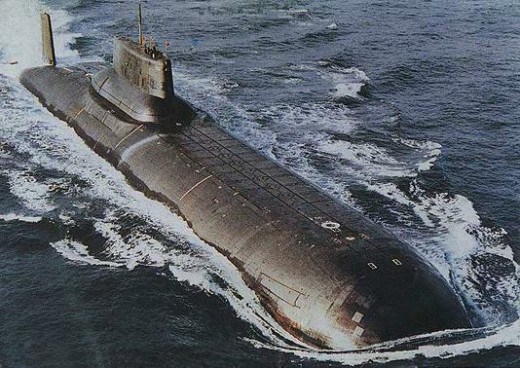Magnetohydrodynamic (MHD) Propulsion Boat - Findings, Conclusions And Recommendations
This is Chapter 4 of the investigatory project entitled "Speed of a Magnetohydrodynamic Propulsion Boat as a Function of Salt Concentration" submitted to Science and Mathematics Education Department (SMED) of University of San Carlos. This lays down the findings, conclusions and recommendations of the study.
You may need to read the other chapters to see the study as a whole. Below are the links:
FINDINGS
- The optimum channel width for the magnets used for this experiment was determined to be 0.198 meters, or 1.98 centimeters.
- This optimum width is greater than the channel width of the MHD boat in the Physics Teacher article because the magnets that they had have stronger magnetic fields than what we used. Since the force produced is proportional to the current flowing between the electrodes, and that from Eq. 4 (shown in the Theoretical Background) we can see that the current is proportional to the cross-sectional area (W ), thus a smaller magnetic field would need a wider separation for optimum force. As was noted, as the magnet separation increases from zero, the force also increases. It must increase because the conducting area is increasing. The average magnetic field is decreasing, but not as fast as the conducting area is increasing.
- The relationship between the speed and concentration could be expressed in the equation S = -5.0246C2 + 2.2505C – 0.1275, where S is the speed of the boat in cm/s while C is the salt concentration in kg/L.
- There was a parabolic relationship between the speed of the MHD boat and salt concentration. As the concentration increases from zero, the maximum speed the boat could attain rapidly increases. However, when the concentration reaches of 0.224 kg/L, the increase in speed stops. If the concentration is increased further, the maximum speed attainable by the boat decreases.
- In this study, it was found out that a MHD boat could still be constructed even if the magnets on each side of the water channel were not identical and have different magnetic field strengths.
- The relationship between the boat speed and salt concentration could possibly be explained by the following (it could just be one or an interplay of the four):
- At higher concentrations (beyond the optimum of 0.22395 kg/L), the corrosion of the brass electrodes with the reactive chloride ions becomes very rigorous because of increased electric current. This may cause material from one brass strip to be electroplated into the other, decreasing current in the process.
- There was also a noticeable discoloration of the solution when the boat operates on solutions of higher concentration. The addition of the products of the brass corrosion (evident from the water’s discoloration) may affect the amount of current, and thus the speed of the boat. It is also probable that electroplating of one of the components of the alloy affected the current.
- At higher concentrations, a lot more bubbles were formed by the electrolysis of water into oxygen and hydrogen gas. The rapid evolution of gas can cause water turbulence inside the channel, hindering the propulsion of the water, and thus effectively decreasing the speed of the boat.
- Literature tells that there is direct correlation between conductivity and salt concentration. However, this is only true at concentrations far below that of saturation. It doesn’t follow that if you increase the concentration, the conductivity of the solution also increases. At much higher concentrations like the ones that we used in this study, there is no clear correlation between them.
CONCLUSION
Constructing an MHD propulsion boat for classroom demonstration is not as easy and inexpensive as the article from The Physics Teacher claims it to be. The hardest part was finding a strong enough magnet. In addition the magnets should have the correct orientation for it to work. That means that the poles should not be located on the ends, but rather on the sides (along its length).
The channel width optimization was a tedious process. From it, we had learned that although the magnetic field decreases if the separation between the magnets increased, it does not follow that a weaker magnet would require you to have narrower channel. Rather, it was quite the reverse, in that you’d need a wider channel to increase the conducting area. The relationship between the magnetic strength of the array of magnets and separation could be expressed by the equation Bavg = 117.09W2 – 6.6339W + 0.1364. The optimum channel width for the magnets used in this study was found to be 1.98 cm.
The relationship between the speed and concentration could be expressed in the equation S = -5.0246C2 + 2.2505C – 0.1275, where S is the speed of the boat in cm/s while C is the salt concentration in kg/L. A concentration of 0.224 kg/L allowed the boat to travel at the highest speed. This is quite high, considering that sea water has an approximate concentration of 0.036 kg/L, and saturated NaCl solution is 0.350 kg/L.
There are a lot of problems that hinder MHD to be the propulsion of choice by sea going vessels at present. Since the concentration of sea water is well blow the optimum concentration for a MHD propulsion vessel to attain its maximum velocity, very strong magnetic fields and electric source are required to compensate for it. Also, new material must be used as the electrodes, since the brass ones would be corroded by chloride ions and would need constant replacement. There was also the nature of the MHD boat to align the polarity of its magnets to the polarity of the Earth’s magnetic field. For MHD to be a viable alternative means of propulsion of sea-going vessels, something must be done to circumvent this tendency to go off course.
Lastly, the boat constructed could not be used to design a device to determine the concentration of an unknown solution. This was due to the nonlinear relationship between boat speed and concentration. The device would not be able to distinguish an increase or decrease of concentration from 0.224 kg/L, since the speed would just decrease either way from this point.
RECOMMENDATIONS
For further study, the researchers recommend the following:
- Stronger magnets of the correct orientation, preferably in bar shape so that there would be more uniform magnetic field across the channel, would give more accurate results.
- Additional water channels could be added to increase boat speed.
- Another material could be used for the construction of the boat hull. The Styrofoam® that was used in this experiment was advantageous in that it allowed the boat to stay afloat. However, it was highly unstable. Polystyrene plastic or any other material may be used instead.
- The voltage source of the boat can be increased by adding more batteries to the battery stack.
- Instead of using brass as the electrodes, other metals that are more resistant to corrosion could be an alternative.
- For more accurate and reliable results, have five (5) trials for every salt concentration instead of just three.
- If a power supply serves as the voltage source, the MHD device in could be conjunction with a flow-meter to have more accurate results.
- If a conductivity meter capable of measuring conductivities of salt solutions with high concentrations is available, an attempt to establish the relationship between the conductivity and boat speed is possible.




